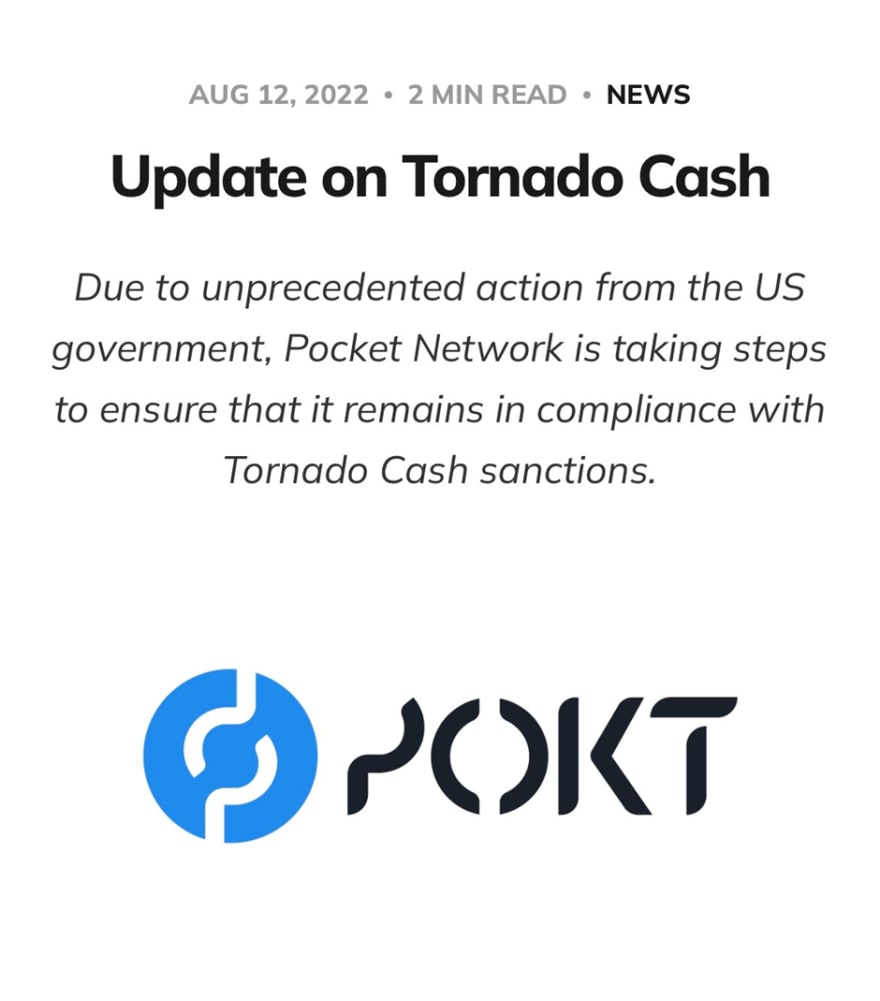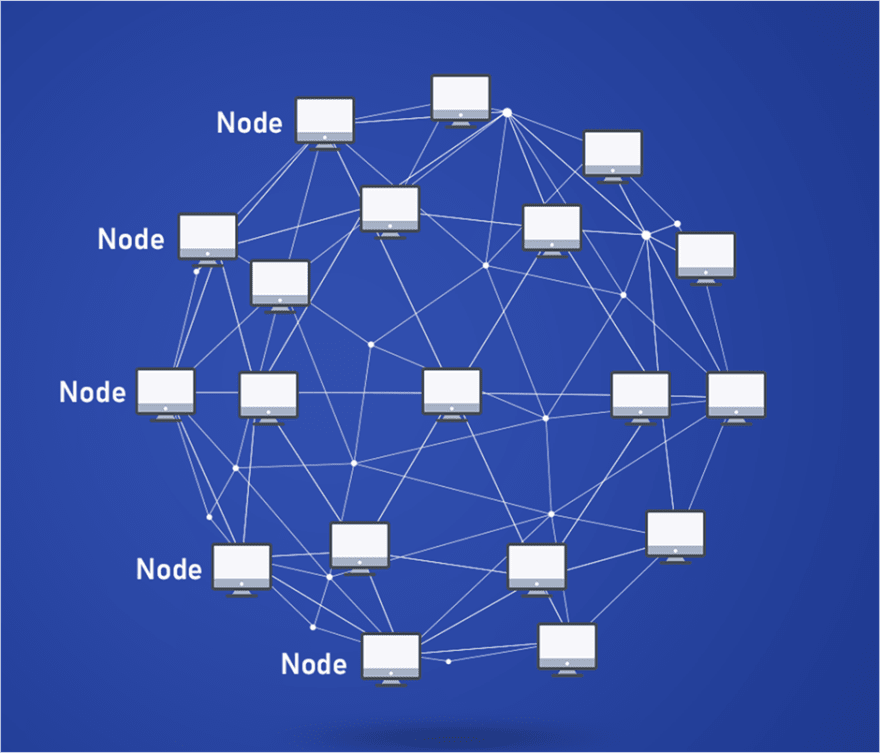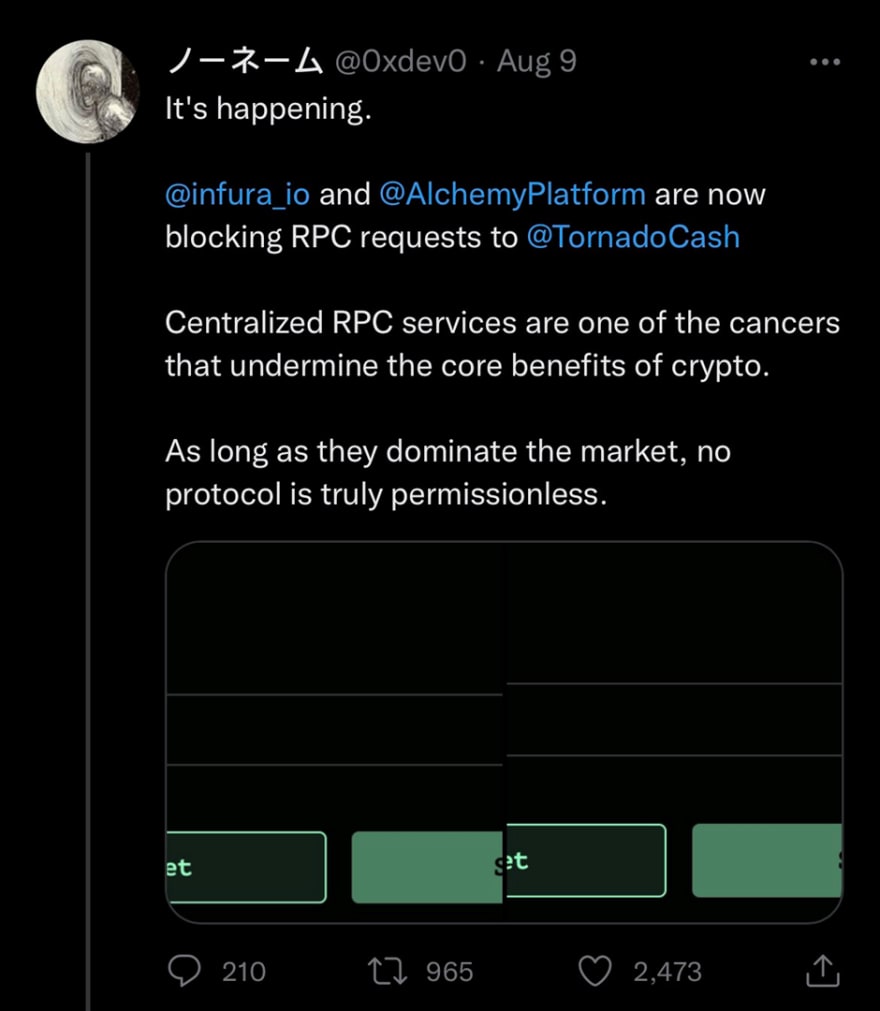If you're new to blockchain development, the one question always arises: what is an RPC node?, sometimes refer as Blockchain Node, Blockchain API Key, or Blockchain Endpoint . You may know that RPCs are essential tools that blockchain developers used to build decentralized apps. But what exactly are they? And why are they so important in blockchain technology? We will learn about that in the following article. It will be a long article but I ensure you that if you stay with this article you will learn all you need to know about RPC nodes and node providers.
What is an RPC node in blockchain?
Let's start from the basics! An RPC node is essentially a program running on a single computer that allows you to connect with the rest of the blockchain network. It connects with other nodes to send information back and forth, checks that transactions sent between people are valid, and stores important information about the state of the blockchain.
RPC (Remote Procedure Call) could be classified as a type of API (application programming interface) that allows developers to run code that can be executed on servers remotely. And when developers build dApps with RPC capabilities, the dapp will connect users’ requests to information from blockchains. For instance, when users access an NFT Collection, play P2E Game or use MetaMask to make transactions, their requests go through an RPC to connect them with the nodes that hold the data from blockchains.
Finally, it's important to note that there's no way to access the information on a blockchain without using a node. Can't be done. Think of it like the browser for the blockchain.
Use Cases For RPCs
1. Creating decentralized applications
One of the major use cases for RPC is building dApps that have the capability to interact with one or more blockchains. Decentralized applications are based on smart contracts that enable features like minting NFTs, automatic execution of a crypto trade, and Raffle Game. They also have a user interface that makes it usable for everyone.
2. Querying blockchain data without access to your own node
When building, developers also need access to a variety of information like block numbers, node connections, transactions, and historical blockchain data. They can make “requests” to their desired blockchain in JSON (JavaScript Object Notation) and receive replies with the info they need.
3. Simplifying the building process
The RPC layer is also useful when building applications because it simplifies the job of developers. For instance, if you wanted users to view their external wallet’s crypto balance within your new DeFi dApp, you wouldn’t need to build a wallet from scratch — you would just need to build an API that can ask to communicate with the wallet to find what the user holds. At the same time, the software that forms the crypto wallet can contain API-enabling code that allows interoperability with many other DeFi protocols.
4. Creating WebSockets to view real-time transactions data
WebSockets are APIs that allow for a constant exchange of information between a client and a server. Since it keeps the communication open and flowing, there is no need to establish a connection every time a message is sent. These are extremely useful for high-throughput applications, such as Internet of Things (IoT) capabilities that need to send and receive large amounts of data.
5. Run calls to access a massive amount of information.
Developers can run calls to execute tasks like encrypting wallets, producing a human-readable JSON object, finding current block size, creating multi-signature addresses, and much more. These are critical pieces of information that builders need to create their own blockchain platforms and services. With access to a free, readily available, and reliable RPC, developers will be able to build faster and make more efficient applications.
Now that you understand what RPC Node is and why we need it in Blockchain development. Let’s discuss how we can actually use RPC Node. We (Web3 developers) have two choices for accessing the node infrastructure necessary for building and operating dApps.
- Running our own Node: Set up a node ourselves and take on the DevOps of equipment maintenance and solving server problems, which is a very difficult task.
- RPC Node Providers: Use services from RPC Node Providers like Ankr, Alchemy, Infura via an RPC layer.
Why is running a node difficult?
There are a few things that make developing on your own node connected to the network particularly annoying. Let's cover some reasons:
Nodes take a long time to set up - up to weeks!
The bane of any developer is spending a lot of time setting up a tool that doesn't directly contribute to what they're trying to build, and nodes are among the worst offenders.
There are typically two major categories of nodes
- Light Nodes: sync just the block headers and requests from full nodes for many queries.
- Full Nodes: Full nodes keep the entire state of a blockchain - every transaction that's ever been created
Most queries work with light nodes, but full nodes are the backbone of the blockchain - they’re necessary to serve most information.
Light nodes have gotten relatively more simple in the past, but still require installing the node program, setting configuration variables, downloading block headers, and checking ports and health to ensure they're running properly
Full nodes are even worse: the biggest issue is that full nodes need to download every block from 0 to latest from scratch, and manually replay every block and transaction ever submitted by anybody ever. For Ethereum mainnet, that's over 10 million blocks and on the order of billions of transactions. That can literally take weeks of syncing.
Nodes have to be managed - by you!
The biggest Obstacle to running your own node is Nodes have to be managed by You. Get ready for the devOps project from hell. Just a quick overview:
Nodes regularly need to be upgraded every few weeks, and occasionally rebuilt from scratch in the case of hard forks and node client upgrades.
Because most nodes weren't designed with reliability in mind, certain queries (such as eth_getLogs) can involve running through millions of blocks and transactions, and often time out or crash a node
Individual nodes can fall behind the network for various reasons like peering and connection issues, getting stranded on outdated branches, issues with internal state. If they’re behind, your users will get served stale data but not realize it, which can be a dangerously terrible experience.
There are various others reasons why running your node is time consuming and hideous.
To save ourselves from all this necessary Hardwork. We can simply use RPC Node Providers. I understand this article is lengthy but bear with me. You already learn all about RPC Nodes to get started. Now let’s learn about NODE PROVIDERS.
What is a Node Provider?
Node providers are essentially teams, companies (like ANKR, Alchemy) that offer a way to access the information on a blockchain without having to run your own node! Instead of sending your requests to a local node, you can send them over the internet to a provider offering an identical API that is running fully synced, up-to-date nodes available 24/7.
A solid node provider will offer, at the very minimum:
- Access to light and full nodes with regularly updated nodes and alerts, so you don't have to worry about forks or network changes.
- Access to archive nodes for historical transaction data.
- Scalability and Reliability: nodes should be available whenever you want, as much as you want them.
- Consistency: providers should handle tricky edge-cases. This is oftentimes an issue when using Infura or other providers.
All and all you get all the capabilities of RPC Node without any hassle but you need to pay some fees for using their services.
You have also understood why should we use Node providers instead of running our own node.
Now let's explore the hidden treasure of Blockchain, Decentralized RPC Node Provider and why should we use them.
Why should we use Decentralized RPC Node Providers?
Now that we know, that a majority of Web3 users do not run their own full node to interact with blockchains, but trust RPC Node Providers. Currently, most of the RPC Node Providers like Alchemy, and Infura are centralized. Now you must be thinking why we are using centralized RPC Node Providers when we building Dapp which literally stands for Decentralized Application. ANKR node provider exactly solving this problem. ANKR is a Decentralized RPC Node Provider that has all the capabilities of the centralized node provider plus is censorship-free. To understand decentralized RPC providers better, we will learn about the benefits of Decentralized RPC Node:
1. Censorship Resistance
Decentralized RPC Provider is censorship-free. Meaning no center authority, not even RPC Provider (like ANKR) can remove or block the RPC request of any dApp like Tornado Cash. We come to see the ill-effect of Centralized RPC Node Providers when the Tornado cash controversy breaks out. Under the Pressure of US Government, they are blocking the RPC Request for Tornado Cash.

With Centralized RPC Node Providers now engaging in censorship, this issue is more clear than ever. We need Decentralized RPC Provider that keeps up our dapps and remains censorship free.
2. Avoid single points of failure
Centralized Web3 providers use AWS data centers only to house their nodes. This limits the global distribution of nodes leading to higher latency and creating a big problem if AWS goes down — all the dApps that depend on these nodes to communicate with the blockchain go down with it.
But the bottom line is that the foundation for Web3 needs to be decentralized. Otherwise, we are just building Web 2.1 — a centralized web with extra steps.
3. The Concentration of Power
Suppose a centralized provider or providers ended up gaining a majority of infrastructure control over a blockchain (or multiple chains) because of the number of nodes they operate. In that case, that could spell disaster for the security and continuity of decentralized systems. Additionally, if services like AWS don’t like a particular dApp, they could effectively shut it down, as they have been doing with Web2 platforms.
4. Gatekeeping and Overpricing
We all want Web3 to be as accessible as possible, so we want fewer paywalls and barriers to entry when it comes to interfacing with node infrastructure. Centralized providers don’t price their services for the communities — they do it to secure as much profit as they can. And for VC-backed providers, prices will more than likely increase every time they seek another round of equity.
Decentralized RPC Node Providers are Better
The necessary evils of Web2 (like centralized mega-providers) are no longer necessary and should be removed at earliest. ANKR is focused on solving this exact problem. By using Decentralized RPC Node Provider (like ANKR), You not only make your dapp truly decentralized but also making help in creating crypto economy. Massive Servers will not run nodes but self-funded DAO’s and Communities will, not VC-backed startups and companies whose sole purpose is to make money. We will have a censor-free environment, Government will not control us. We have a once-in-a-lifetime opportunity to build a new layer of the web that provides autonomy, privacy, censorship resistance, and self-governance without a need for profiteers capitalizing on its use. Decentralized infrastructure is the missing puzzle piece that allows us to build, transact, communicate, and earn rewards on the future web independently.
If you are still with me, I can assure you that you have learned all you need to know about RPC nodes and node providers.
References:
https://medium.com/ankr-network/why-are-rpcs-so-important-in-blockchain-development-5-use-cases-60a16a02c143
I hope you learned something new and solved the problem. Thanks for reading. Have fun!
You can follow me on Twitter, GitHub and Linkedin. Keep your suggestions and comments coming!





Top comments (1)
Guys, if you need an access to full nodes, you can get a free Api key here